Due to their location in the middle of the Pacific Ocean, the Hawaiian islands serve as a great (and popular) place to visit throughout the entire year. Though you won’t find the 4 different seasons on any of the islands, you will notice that there are a few climate changes on each, especially The Big Island of Hawaii. On The Big Island of Hawaii, also referred to as simply The Big Island, there are 11 different climates situated around the island. The other main islands, Oahu, Maui and Kauai also please with a small range of climates that you can experience all in a few hours time.
Because of this, you’ll notice that summer is really the main weather season here and that the only real difference you’ll experience is how dry or humid the air is during your trip. Though the amount of rain each island receives does change a bit throughout the year, the amount of rain that you’ll personally witness really depends on which side of each island you stay on. This is because there is a dry side and a rainy side to choose from. When deciding what time of the year to visit, you’ll want to note that late Spring and Fall are the cheapest. Both of these ranges (April through May and September through the first few weeks of December) are considered the off season. The high season runs from mid December through to the end of March. For more information on when to visit Hawaii, continue reading below.
Best weather with moderate crowds: May, June, October, and November
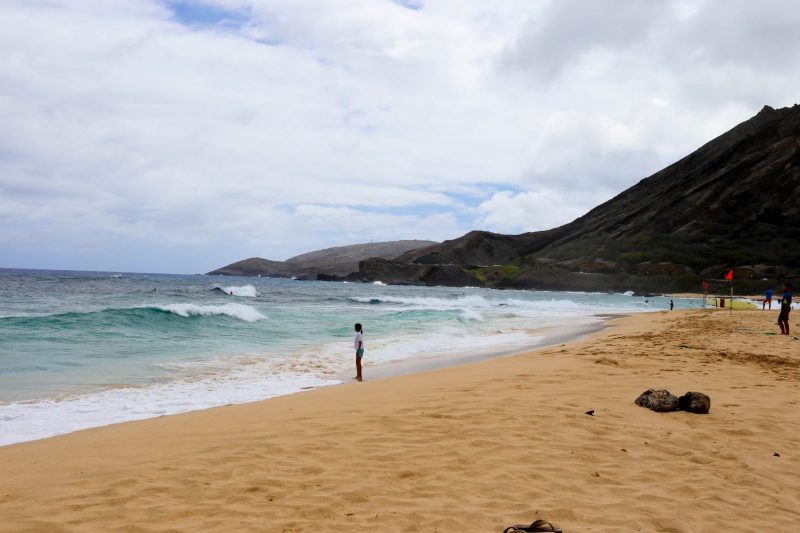
June stands out a bit because it really doesn’t fall in the low or high season but is more of what you would call the shoulder season. This means that you won’t find the cheapest rates during this month, but at the same time rates are far from the most expensive.
Summer crowds and heat: July, August, and September
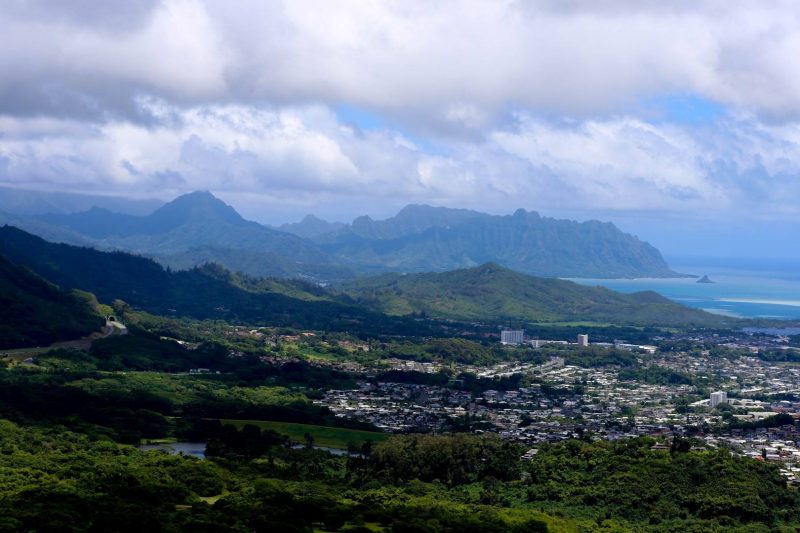
Though hotel rates won’t be as expensive as winter rates, they’re not the cheapest during this time of year either. That’s because even though you won’t find surfers and cruise passengers engulfing the islands, you will find plenty of families taking their yearly vacation with their school aged children.
Off-season Hawaii: April, May, September, October, and November
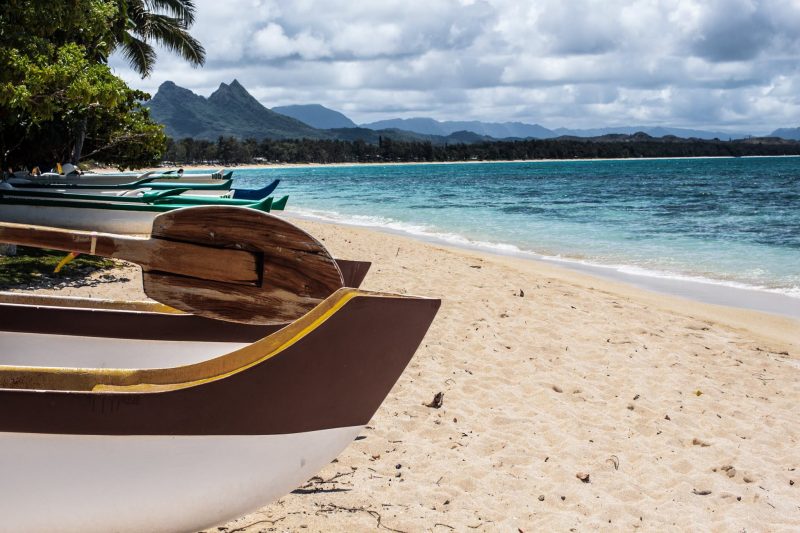
Along with the great weather, the off season provides visitors with lower hotel rates, which can make a big difference to those with smaller budgets. Most who visit the islands prefer to rent a car rather than use taxis, which is a great idea during the off season as rental rates drop dramatically. Tours, both land and ocean based, tend to be a lot cheaper as well, making it so that you can do more during your visit while still spending basically the same amount of money.
High-season Hawaii: January, February, and March
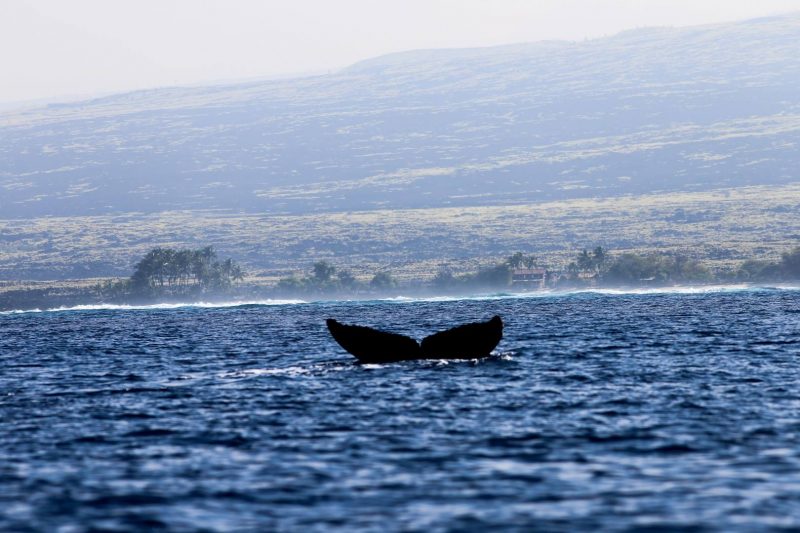
Due to the high amount of visitors during this time of year ( a few of which travel to the islands for a chance to see a humpback whale in the wild), you’re guaranteed to find higher hotel and resort rates among all of the islands. This means that even the less popular hotels that are located away from the beach will raise their prices. You may also find that food prices, both in the grocery stores and the restaurants, are a little higher. Activity rates, such as snorkeling and scuba diving tours, sometimes rise as well, though this isn’t as common as the rate increases at area hotels.
Surfing season in Hawaii: November, December, January, February, and March
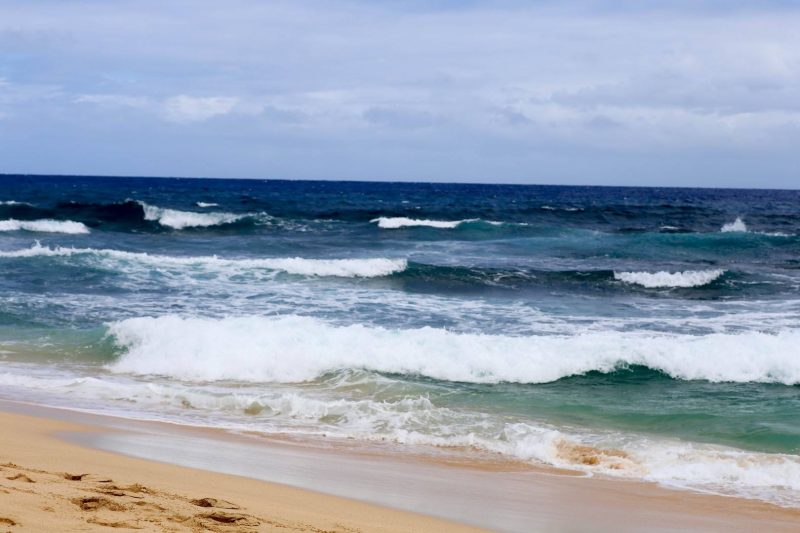
During this time, expect all of the hotels, resorts and vacation homes along popular surfing beaches to be all booked up. Though most of the surfers like to rent out vacation homes with their families, friends and other surfers, the hotel and resort rooms are booked in advance by reporters, camera men and other media personalities that have come to the islands to cover the many surfing competitions. If you happen to find a few available rooms, be prepared for some higher rates.
Christmas and New Years in Hawaii also tends to be busy
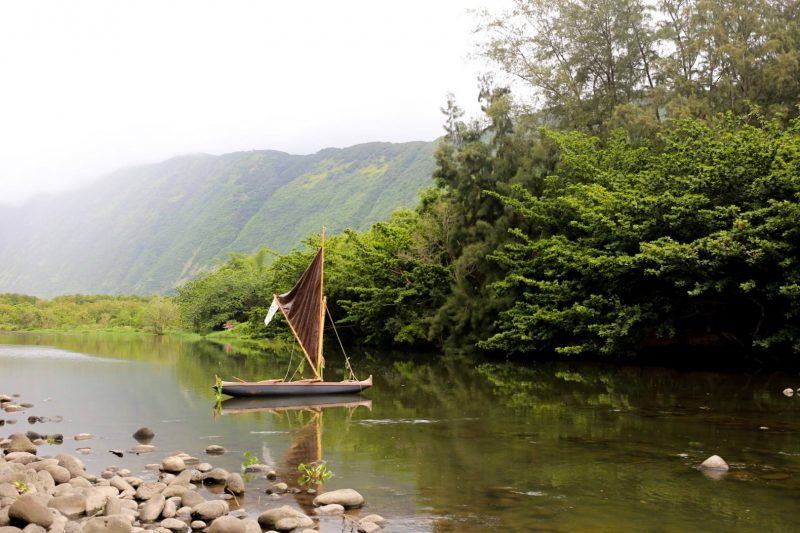
If you’re looking into visiting for your holiday vacation, then you’ll want to book your flights as early as you possibly can. The same rings true for your accommodations. Hotels, resorts and vacation rentals book up very quickly during the holiday season, leaving last minute planners out of luck.
Honolulu Climate
| Jan | Feb | Mar | Apr | May | Jun | Jul | Aug | Sep | Oct | Nov | Dec | |
|---|---|---|---|---|---|---|---|---|---|---|---|---|
| High °F | 80 | 80 | 81 | 83 | 85 | 87 | 88 | 88 | 88 | 87 | 84 | 81 |
| Low °F | 66 | 61 | 68 | 69 | 71 | 73 | 74 | 75 | 74 | 73 | 71 | 68 |
| Precip “ | 2.3 | 2.0 | 2.0 | 0.6 | 0.6 | 0.2 | 0.5 | 0.6 | 0.7 | 1.8 | 2.4 | 3.2 |
| High °C | 27 | 27 | 27 | 28 | 29 | 31 | 32 | 32 | 31 | 30 | 29 | 27 |
| Low °C | 19 | 19 | 20 | 21 | 22 | 23 | 24 | 24 | 24 | 23 | 22 | 20 |
| Precip cm | 5.9 | 5.1 | 5.1 | 1.6 | 1.5 | 0.7 | 1.3 | 1.4 | 1.8 | 4.7 | 6.2 | 8.2 |
Hilo Climate
| Jan | Feb | Mar | Apr | May | Jun | Jul | Aug | Sep | Oct | Nov | Dec | |
|---|---|---|---|---|---|---|---|---|---|---|---|---|
| High °F | 79 | 79 | 79 | 81 | 81 | 82 | 82 | 83 | 83 | 83 | 83 | 83 |
| Low °F | 64 | 64 | 65 | 66 | 67 | 68 | 69 | 69 | 70 | 70 | 67 | 65 |
| Precip “ | 9.2 | 9.5 | 13.4 | 11.5 | 8.1 | 7.4 | 10.8 | 9.9 | 9.9 | 9.8 | 15.5 | 11.6 |
| High °C | 26 | 26 | 26 | 26 | 27 | 28 | 28 | 28 | 29 | 28 | 27 | 26 |
| Low °C | 18 | 18 | 18 | 19 | 19 | 20 | 21 | 21 | 21 | 21 | 20 | 20 |
| Precip cm | 23.5 | 24.2 | 34.1 | 29.3 | 20.6 | 18.7 | 27.4 | 25.0 | 25.3 | 24.8 | 39.4 | 29.4 |
Annual events in Hawaii to be aware of
Chinese New Year (February 16, 2018 and February 5, 2019)
A very big event on the island of Oahu and mostly celebrated in Honolulu, the Chinese New Year is marked with red lanterns down every street and hosts a wide variety of events. Even though the Chinese New Year falls on a single date, parties and events are held for weeks.
Honolulu Festival (March 10-12)
A 3 day event that’s hosted on Waikiki, the Honolulu Festival is great for all ages and is another highly anticipated event. Along with a parade, there are various dance performances, crafts and food vendors.
Merrie Monarch Festival (April- Easter week)
This festival is located in the town of Hilo, on The Big Island, and is easily one of the biggest events in all of Hawaii. If you’re planning to visit (and stay in) Hilo during this week, you’ll want to book your accommodations in advance as hotels fill up really early as people flock into town for the festival. This particular event has been going on since 1963 and celebrates both Hawaiian culture and the hula dance.
Lei Day (May 1)
Playing host to live music, hula performances, crafts and lots of food vendor, this May Day event takes place in Waikiki, Oahu as well as on the other islands.
Lantern Floating Festival (May- Memorial Day)
Held on Ala Moana Beach in Honolulu, the Lantern Floating Festival takes place during the sunset and attracts literally thousands of people onto the beach and into the water. During the festival you’ll see both wooden and paper lanterns let loose into the ocean.
Aloha Festivals (September)
Another week long event, the Aloha Festivals are held on the island of Oahu in Honolulu. During this week you’ll find that some of the small local restaurants close up for a day or so that in order to participate in the events.
Vans Triple Crown (November though December)
Largely known as the biggest surfing competition on the planet, the Vans Triple Crown runs from November into December and plays host to 3 different surfing competitions along the North Shore of Oahu. Though the actual days of each competition vary from year to year and are dependent on the surf conditions, you’re sure to run into completely booked hotels and beaches swamped with people. If you want to visit the area during these 2 months, you’ll need to reserve your room way in advance.
Where to go in Hawaii
Though there are technically 8 different main Hawaiian islands, only 4 of them are visited on a regular basis. These are The Big Island of Hawaii, Maui, Oahu and Kauai.
The Big Island of Hawaii
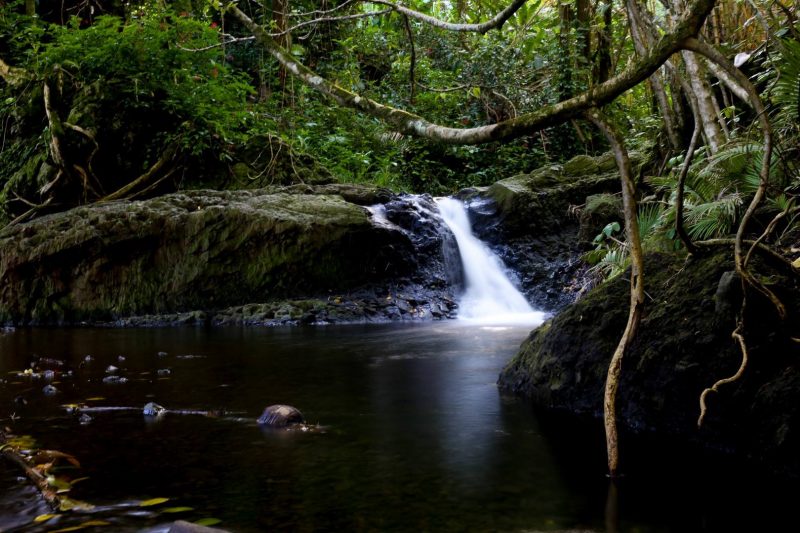
Maui
Known for its golfing, spa, fresh seafood and fancy resorts, the island of Maui is a fantastic choice if you’re seeking a relaxing romantic island getaway with a tiny bit of adventure mixed in. Though you can easily spend your entire stay at your resort, it is recommended that you rent a car and drive down the Road to Hana. A long weekend on the island is plenty of time to see everything though lots of visitors choose to spend a week here instead.
Oahu
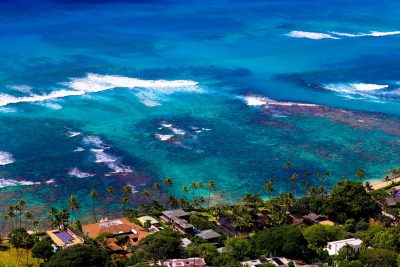
>>>Honolulu prices and advice
Kauai
Mostly covered by tropical rainforest, Kauai is nicknamed ‘the Garden Isle’ and is also a popular choice for adventure seekers. Here you’ll find that the landscape is the most extreme out of the 4 main islands. This is because Kauai is much older than Oahu, Maui and The Big Island. If you choose to visit Kauai, you’ll want to note that there isn’t much to do here aside from hiking and walking a few beaches. The island is mostly home to farmers and a few small towns. A long weekend here gives you just enough time to go on a long hike, visit a few beaches and enjoy a cultural experience.
